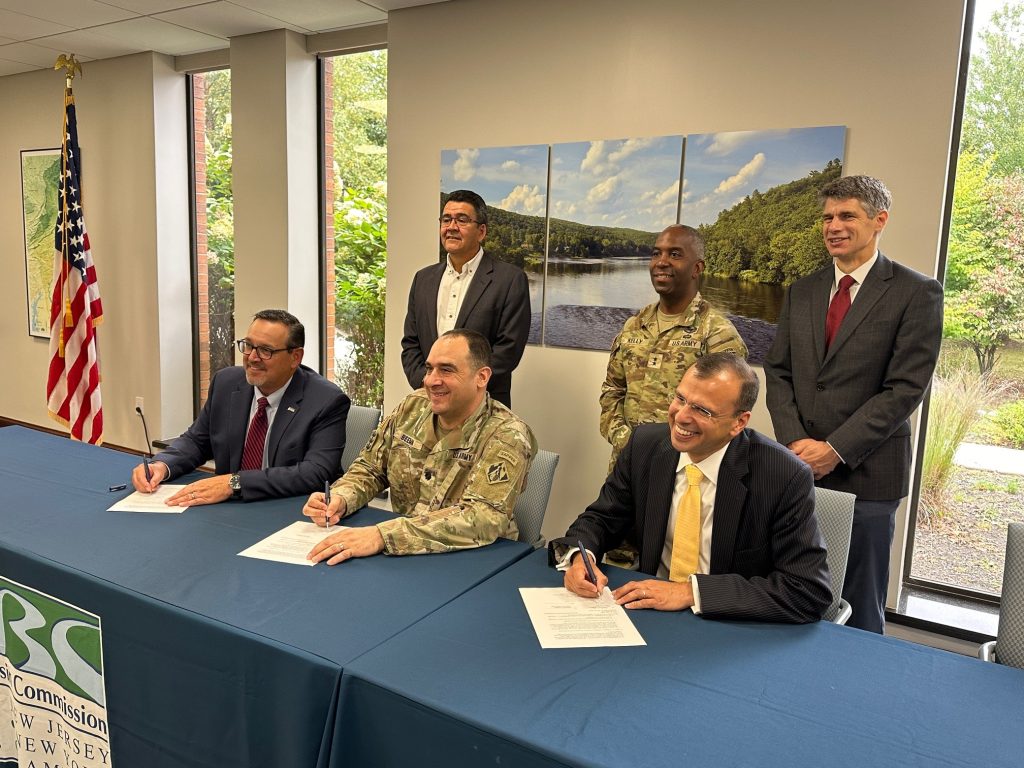
Agencies sign on to a re-evaluation of a Lehigh River dam
| October 4, 2024
Representatives from three government agencies last month agreed to share the costs of a study to consider the current and futures uses of a Luzerne County, Pa., dam — a study that has aroused the suspicions of local residents and water recreationists near the Lehigh River.
At the heart of the study — and anxiety by locals — is the Francis E. Walter Dam Reservoir, which was completed in 1961 with the sole purpose of flood control. That use was modified in 1988 when Congress authorized recreation as an added purpose.
The F. E. Walter Dam is one of five reservoirs owned and operated by the U.S. Army Corps of Engineers in the Delaware River Basin.
The study, which is expected to take until early 2027 to complete, will evaluate the uses of the reservoir during emergency drought conditions in the Delaware River basin to help repulse the salt line in the Delaware Estuary, augment times of low flows and help protect aquatic life, according to the Army Corps.
The feasibility cost-sharing agreement is intended to ensure adequate time and resources to finish a full re-evaluation of the reservoir, including additional environmental modeling and engineering analysis, officials said.
“The intent of this study is to determine if modifications to the F.E. Walter Dam structure, infrastructure, or reservoir operations can be implemented to improve water supply, fisheries, recreation, and other objectives — especially during drought conditions — without adversely impacting the congressionally authorized purposes of the reservoir, which are flood risk management and recreation,” said the Delaware River Basin Commission, which was one of the signatories to the cost-sharing agreement.
Other signatories include the U.S. Army Corps of Engineers and the New York City Department of Environmental Protection.

Read more: Editorial report: Facts vs. opinion on the F.E. Walter Dam study
Ordinarily, the study might be considered a bureaucratic review of a piece of infrastructure that would go largely unnoticed by the public.
However, hundreds of people packed a 2020 hearing about the future of the dam, fearful that New York City could somehow influence how and when water is released into the Lehigh River — releases that are essential to maintaining tourist-based recreation.
That hearing was followed up by one hosted by Pennsylvania state politicians who heard from Carbon County residents and business owners who voiced suspicion about New York City’s intentions.
For whitewater outfitters that depend on regularly scheduled water releases from the dam into the Lehigh for recreational purposes, any changes in flows could affect their businesses. Similarly, anglers worry about any changes to cold-water releases that could disrupt the fishing population.
The Army Corps, in an FAQ posted on its site, has sought to dispel those concerns.
“New York City does not want to draw drinking water from F.E. Walter Reservoir, have control of its operations, or purchase space within the reservoir,” the site says. “Its interest in the study is related to drought planning in the face of sea-level rise that is accelerating due to climate change, and how the operation of reservoirs throughout the basin can help meet these future challenges.”
Pushing back the salt line of the river/estuary currently relies on water releases from New York City’s three Delaware River drinking water reservoirs. Keeping the salt line at bay is critical for the integrity of water infrastructure in places like Philadelphia as well as to the health of water consumers.
The NYCDEP owns three large water supply reservoirs at the headwaters to the Delaware River Basin in New York State. These three reservoirs are managed through a 1954 U.S. Supreme Court decree. Changes to their operation and management have occurred since 1954, but only with unanimous consent of the five decree parties: Delaware, New Jersey, New York City, New York State, and Pennsylvania.
In fact, a feasibility study specifically on the F.E. Walter Dam is part of a 2017 Flexible Flow Management Program, which is the most current management plan for these reservoirs, the DRBC said.
The Army Corps and its study partners have said the reservoir water from the dam will undoubtedly continue to flow down the Lehigh River, which joins the Delaware River at Easton.
“Co-sponsoring this study will support drought management planning, increase climate resilience in our shared Delaware River Basin, and ensure that all Basin states are represented in the process,” the DRBC’s executive director, Steve Tambini, said in a statement.







